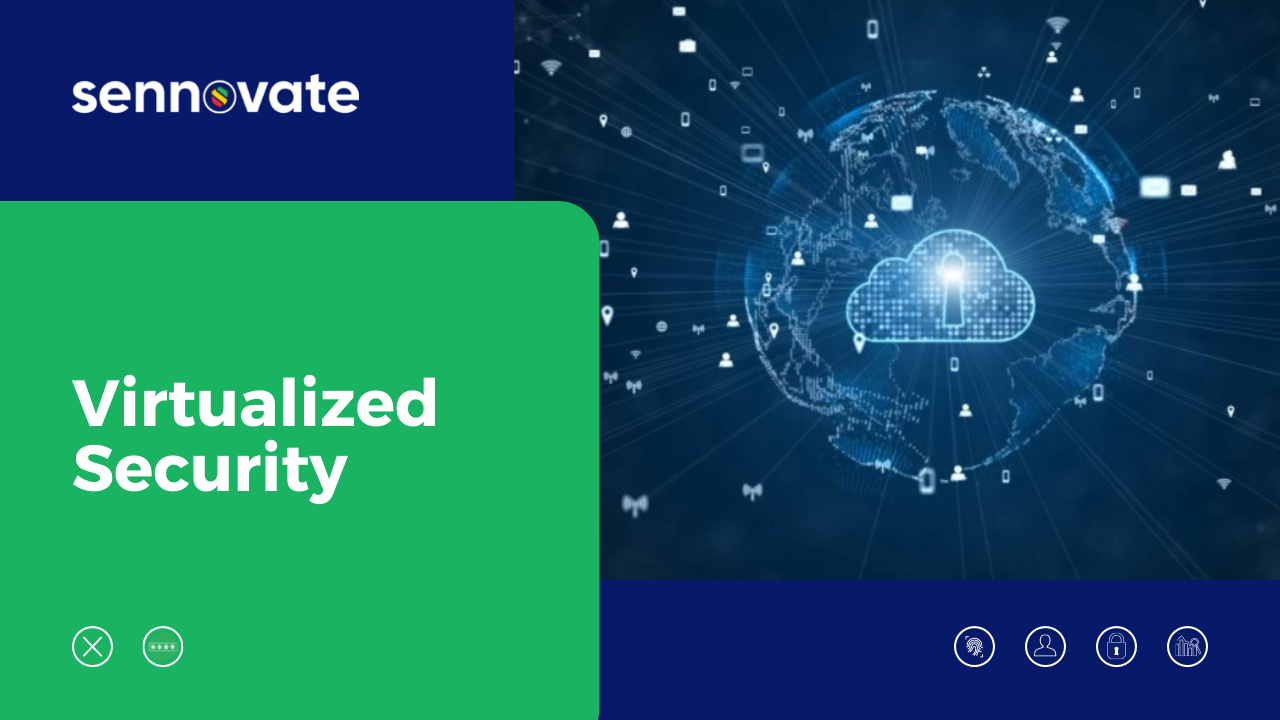
Virtualized Security
Today, most of the processes in every organization, are being moved to the cloud for flexible infrastructure and more efficient collaboration. But this virtualized IT environment is prone to more risks than your typical environment. This is where security for virtualization comes into play. So, what is Virtualized Security? How beneficial it is to your working environment? What are the risks associated with it? Read on to find out more.
What is Virtualized Security?
Security Virtualization or Virtualized Security are the solutions that define the process, procedure, and compliance rules that ensure the protection of a virtualized infrastructure. Before that, let’s backtrack to get an idea about virtualized infrastructure.
A virtualized infrastructure consists several of Virtual machines that are run on a guest OS, a hypervisor, or a standard host OS, and the underlying hardware component where all the virtual machines are run.
There are three types of virtualized security:
Segmentation
Allows resources to be available to only specific users and applications
Micro-Segmentation
Divides a data center into segments and implements policies at the workload level to define security functions at each level and limit an attacker’s possibility of breaching.
Isolation
Implemented in a public cloud environment to segregate workloads and applications in a network.
Virtualized Security Architecture
The main goal of the virtualized system is to ensure that the applications can be deployed anywhere and the resources can be made available to anyone in the network. So, an operator can handle the centralized host machine to make decisions over the workload and applications dynamically. This is such a huge contrast in comparison to the traditional hardware systems.
With this difference, we can confirm that the security provided would be different from the hardware-based security. Hardware-based security is static and is employed on firewalls, routers, and switches. Virtualized security has the advantage of being dynamic and flexible. It is implemented as an application on a hypervisor or as a service on a virtual machine. It is mostly cloud-based and can be deployed to any parts of the network. It can also perform the functionalities of hardware components like a firewall and implement it through software.
So, in a snapshot, virtual security has the capability to:
- Implement security compliance policies and procedures at each virtual machine
- Secure the virtual machines, network, and other virtual components from attacks and vulnerabilities.
- Authorize and control each machine in the network.
Benefits and risks of Virtualized Security
Virtualized security provides a variety of features that benefit us the most. So what are those features?
Benefits of virtualized security
- Compliance policies: Regulatory compliance policies and procedures are constantly updated and it is tough to keep up with their ever-changing demands in a static environment. Virtual security provides the security to implement the new policies on the go.
- Cost-effectiveness: Security on hardware components of a network are quite high. But, in cloud-based security, the cost depends on the usage of resources, which helps to save the additional cost.
- Flexibility: Virtual security provides the freedom to deploy workloads from anywhere and provide protection in both cloud and hybrid environment.
- Efficiency: Deploying applications is much faster and simpler in a virtual environment than in a hardware-based environment. A centralized software can set up security systems through which the applications can be deployed. It also has the added advantage of automating the tasks, which frees up the load for the IT personnel.
Risks in Virtualized Security
Virtualized security, for all its benefits, is not free from its own dose of the bad side. There are a few advantages in the security provided by hardware that cannot be compensated by the advancements of virtual security.
- If the host system is compromised, the other systems are also at risk
- It is difficult to keep track of the applications that are deployed in the cloud
- Sharing of files between the host system and guest systems is not secure.
- Linkage of multiple users increases the risk
To learn more about the risks in detail, check this out!
No matter the security that is implemented in both physical and virtualized IT environment, the chance for these defense systems to fail are still high. So, invest in the best security tools in the market to keep your resources safe!
Have questions about finding an
Biometric Authentication consultant?
Call (925) 918-6618 the consultation is free.
About Sennovate
Sennovate delivers custom identity and access management solutions to businesses around the world. With global partners and a library of 1000+ integrations, we implement world-class cybersecurity solutions that save your company time and money. We offer a seamless experience with integration across all cloud applications, and a single price for product, implementation, and support. Have questions? The consultation is always free. Email [email protected] or call us at: (925) 918-6618
